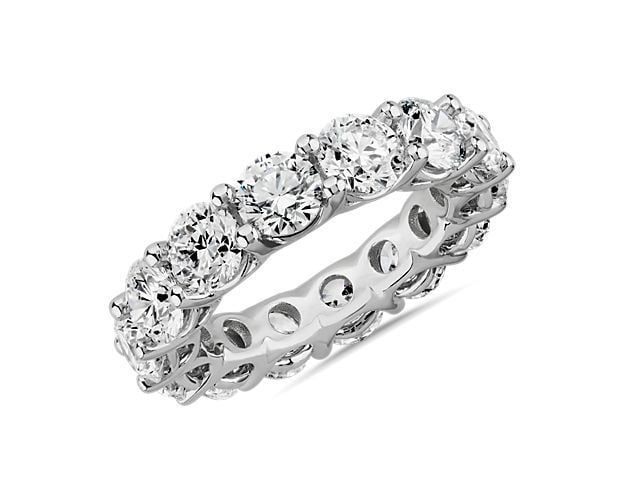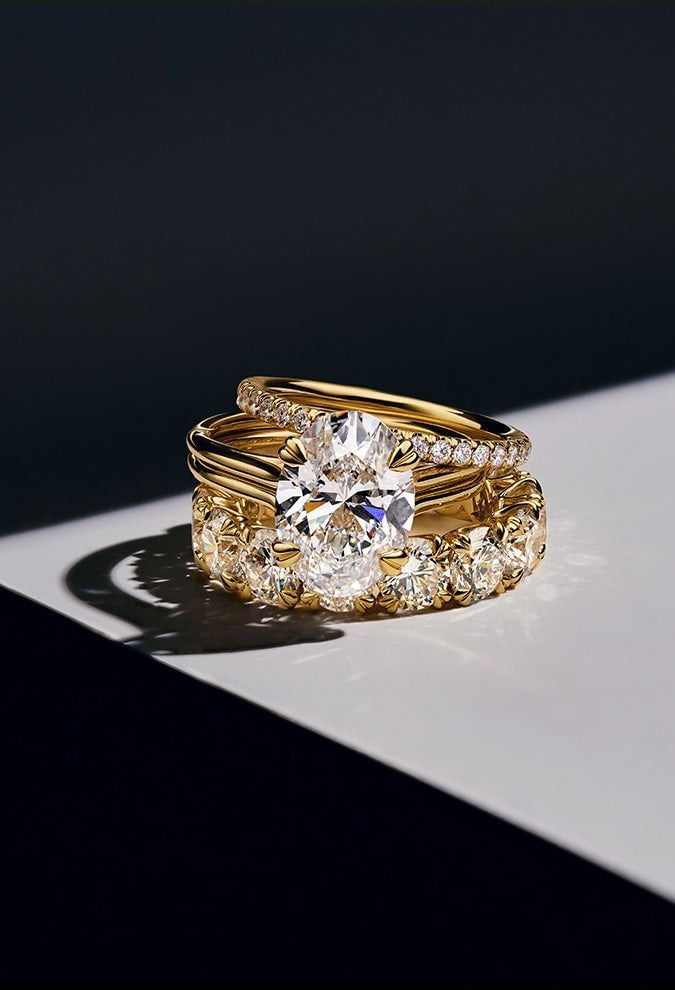Harnessing the Ethical and Sustainable Potential of Synthetic Diamonds in the Jewellery Industry
Harnessing the Ethical and Sustainable Potential of Synthetic Diamonds in the Jewellery Industry. Imagine stepping into the dazzling world of diamonds, only these aren’t your traditional, earth-mined gemstones but lab-grown, synthetic counterparts. In the article, “Harnessing the Ethical and Sustainable Potential of Synthetic Diamonds in the Jewellery Industry,” you will discover how these sparkling marvels, first pioneered by General Electric in the mid-20th century, have risen in popularity due to their ethical, sustainable, and more affordable profile.
While sharing the same chemical and optical characteristics as natural diamonds, these lab-created gems are distinguished by how they’re formed, valued based on cut, colour, clarity, and carat, and require significantly fewer resources to produce – a true testament to their viability as an ethical and sustainable choice. As you navigate the shimmering global diamond market, from the United States and India to China and emerging hotspots such as UAE and Singapore, you’ll also uncover how diverse brands, from technology to jewellery, like Element Six, Ada Diamonds, and Diamond Foundry, are harnessing the luminous potential of these synthetic diamonds.

Understanding Synthetic Diamonds
The world of diamonds reaches far beyond naturally occurring gems. Enter synthetic diamonds, artificially created diamonds that have gained popularity due to their sustainable, ethical, and affordable nature.
The process of creating synthetic diamonds
Synthetic diamonds aren’t plucked from the earth’s crust; instead, they’re created in a lab. The process mimics the natural conditions under which diamonds form. In these labs, high pressure and high temperature (HPHT) or chemical vapor deposition (CVD) are used to transform carbon atoms into diamonds. Both processes maintain the same basic steps: creation, growth, and extraction.
Chemical and optical characteristics of lab-grown diamonds
It’s worth noting that synthetic diamonds possess the same chemical and optical characteristics as their natural counterparts. This means they’re just as hard, just as shiny, and produce the same kind of sparkle. The key difference lies in their origin – one coming from natural geological processes over the course of millions of years, and the other born within a more controlled lab setting.
The history of synthetic diamonds and their development
Synthetic diamonds aren’t particularly new. Their origins date back to the mid-20th century when General Electric (GE) first pioneered the process. Scientists at GE exploited the principles of heat and pressure to create diamonds, effectively mirroring nature’s own process. Over time, the methods have evolved, leading to more efficient and controlled production processes.
Economic Impact of Synthetic Diamonds
In an industry as historic as diamonds, synthetic stones represent a significant economic disruption.
Cost difference between natural and synthetic diamonds
Synthetic diamonds are generally more affordable than natural diamonds. While they share most physical properties, factors such as a lack of resale value and decreasing demand work to bring down their price. This makes them a great choice for those looking for an affordable, ethical alternative.
Impact on the global diamond market
The rise of synthetic diamonds has had a profound impact on the global diamond market. While natural diamonds still predominate the industry, synthetic diamonds are carving their niche, particularly among younger consumers who value sustainability and fair-trade practices.
Emergence and role of major synthetic diamond producers
As the demand for synthetic diamonds has grown, so too have the producers. Major players like De Beers, ALTR Created Diamonds, and Swarovski have all introduced lab-grown diamonds into their product lines, helping to normalize synthetic diamonds in the broader market.
Resale value and demand considerations
While synthetic diamonds are comparable to natural diamonds in many ways, one area where they lag is resale value. Many buyers still value the scarcity and romantic ‘aura’ that natural diamonds boast, so demand for synthetics on the secondary market is lower. However, as awareness and acceptance of synthetic diamonds increase, this could change.
Ethical Considerations of Synthetic Diamonds
The rise of synthetic diamonds isn’t just about economics; it’s also about ethics.
Comparison between traditional diamond mining and synthetic diamond production
Traditional diamond mining can be a controversial industry, associated with harsh labor conditions and negative environmental impacts. On the other hand, lab-grown diamonds represent a more humane and environmentally-friendly option. Their production doesn’t involve the displacement of land, dangerous mining conditions, or geopolitical issues linked with diamond mining.
Resource requirements and environmental impact
Synthetic diamond production requires fewer resources compared to traditional diamond mining. Unlike mining, which can deplete local ecosystems and contribute to significant habitat disruption, synthetic diamonds can be produced without any such impact.
Labor conditions in synthetic diamond production
In the realm of societal ethics, synthetic diamond production also proves superior. The process doesn’t require hazardous mining or expose workers to harsh conditions, and typically aligns with fair labor practices.
Changing consumer sentiments towards ethically-sourced gems
Consumer preferences are shifting towards more ethically sourced options, and synthetic diamonds fit the bill. This change in sentiment could drive greater acceptance and expansion of lab-grown diamonds in the future.
Sustainable Aspects of Synthetic Diamonds
Another major advantage of synthetic diamonds is their sustainability.
Habitat disruption caused by diamond mining versus synthetic production
Unlike natural diamond mining, which can cause significant environmental degradation and habitat disruption, synthetic diamond production is much less disruptive. By occurring in controlled lab environments, synthetic diamond production bypasses the need for vast open-pit mines.
Energy requirements for lab-grown diamonds
Though synthetic diamond production is energy-intensive, it still generally uses less energy than traditional diamond extraction. Also, as production technologies continue to improve, it’s likely that the energy footprint of lab-grown diamonds will decrease over time.
Implications for waste management and disposal
The lab-based creation of synthetic diamonds notably reduces waste compared to traditional mining operations. Since production is tightly controlled, there’s no damage to ecosystems through misplaced waste material.
Sustainability labeling and certification for synthetic diamonds
There are currently numerous labeling and certification programs to denote synthetic diamonds, including the International Gemological Institute’s ‘Lab Created’ designation. Such certifications can reassure consumers about the sustainability and ethical standards adhered to in the production of these stones.

Quality Assessment of Synthetic Diamonds
Quality isn’t something that’s just reserved for naturally occurring stones – synthetic diamonds can hold their own here too.
Four metrics for evaluating synthetic diamonds: cut, colour, clarity, and carat
The same four ‘C’s that evaluate natural diamonds – cut, colour, clarity, and carat size – are used to assess synthetic diamonds. Though they’re lab-grown, synthetic diamonds are subject to the same stringent grading processes as natural ones. https://mauragemsandjewellery.org/casts-playful-fine-jewelry-strategy-widens-reach-with-nordstrom-expansion/
Quality assurance measures for synthetic diamonds
Lab-grown diamonds are meticulously inspected for quality, which helps to ensure customer satisfaction and trust. Slight colour variations and inclusions can occur naturally during the growth process, so it’s essential that these gems undergo rigorous quality checks.
Consumer perceptions of synthetic diamond quality
While some consumers might initially be wary, it’s important to remember that synthetic diamonds aren’t ‘fake’. They offer the same brilliance and strength as mined diamonds. As awareness around synthetic diamonds increases, perceptions have started to shift, with many consumers now seeing these stones as a quality, ethical alternative.
Potential challenges in quality identification and counterfeit prevention
Differentiating between lab-grown and natural diamonds can be challenging, which opens a potential problem around counterfeiting. However, advanced technology and standardized identification techniques can help determine the provenance of diamonds and maintain integrity in the market.
Global Markets for Synthetic Diamonds
As synthetic diamonds become more prevalent and accepted, global markets are shifting to accommodate them.
Major markets: the United States, India, and China
The United States, India, and China dominate the diamond market—both natural and synthetic. In these countries, synthetic diamonds are particularly prominent in the fashion jewellery sector, where consumers are more price-sensitive and open to lab-grown gems.
Emerging markets: The United Arab Emirates (UAE) and Singapore
Emerging markets like the United Arab Emirates (UAE) and Singapore are also acknowledging the potential of synthetic diamonds. In these markets, the shift has been largely driven by younger consumers who value sustainability and are open to innovation in jewellery.
Factors influencing market dynamics and consumer preference
Various factors are influencing the market dynamics for synthetic diamonds. As consumers become more eco-conscious, desire for sustainable and conflict-free jewels is increasing. Additionally, the lower price point of synthetics makes them an attractive choice for younger consumers or those just entering the diamond market.
Forecasted growth and market trends
The synthetic diamond market is predicted to experience a significant increase in the coming years. As traditional diamond resources diminish, synthetic diamonds provide a sustainable and ethical choice.

Industry Utilization of Synthetic Diamonds
Synthetic diamonds aren’t just about pretty rings and necklaces. They have a wide array of uses across sectors.
Applications of synthetic diamonds beyond the jewellery industry
Beyond gem-quality diamonds, synthetic diamonds can be used in a number of industrial applications, from abrasives to electronics. Their hardness and heat resistance make them perfect for cutting tools, while their impressive thermal conductivity has implications for heat dissipation in electronics.
Technology companies harnessing synthetic diamonds
Given their properties, synthetic diamonds are finding favor in the world of technology. Semiconductor companies, for example, are using synthetic diamonds as a conductive layer in some of their products.
Integration of synthetic diamonds into jewellery designs
In the realm of jewellery, synthetic diamonds open up new possibilities. Designers are using them alongside natural gems to create unique, affordable pieces without compromising on ethical considerations.
Innovative uses of synthetic diamonds by brands like Element Six, Ada Diamonds, and Diamond Foundry
Brands like Element Six, Ada Diamonds, and Diamond Foundry are all harnessing the potential of synthetic diamonds in innovative ways. From incorporating them into high-end audio technology to using them as a sustainable, conflict-free alternative to natural gems in signature jewellery pieces, these brands are redefining diamonds.
Marketing and Public Perception of Synthetic Diamonds
As synthetic diamonds grow in presence, their public perception and marketing significance are evolving.
Brand narratives around ethical and sustainable jewels
Brands are capitalizing on the ethical and sustainable narratives around synthetic diamonds. Sophisticated marketing campaigns highlight the eco-friendly and humane production processes of lab-grown diamonds, appealing to a new generation of socially conscious consumers.
Influence of famous endorsements
Famous endorsements can significantly sway public perception towards synthetic diamonds. Celebrities flaunting beautiful lab-grown diamonds help to popularize them and remove any lingering stigma around their synthetic status.
Public perception towards synthetic vs. natural diamonds
While natural diamonds embody centuries of tradition and lore, the times are changing. More people are shifting their mindset to see synthetic diamonds not as “fake” diamonds, but as ethical, earth-friendly, and budget-friendly gemstones in their own right.
Impact of marketing strategies on buyer choices
Marketing strategies play a significant role in buyer choices. Properly executed campaigns emphasizing the economic, ethical, and environmental advantages of synthetic diamonds can successfully sway consumer opinion, influencing buying decisions.

Legal and Regulatory Landscape for Synthetic Diamonds
Like any industry, the synthetic diamond market faces its own set of regulations and legal considerations.
Current regulations surrounding synthetic diamond production and sale
There are strict regulations in place globally to ensure proper disclosure and identification of synthetic diamonds to protect the buyer. These rules aim to maintain transparency and foster consumer trust.
Legal issues and disputes in the synthetic diamond industry
While lab-grown diamonds hold immense potential, they’re currently subject to a number of legal disputes, mainly around patent and trademark concerns. Such disputes can potentially impact growth, affecting the competitive positioning of different companies in the industry.
Impact of regulatory changes on the synthetic diamond market
Changes in regulations can greatly influence the synthetic diamond market. Looser regulations might favour quicker industry growth, but stricter, well-made rules can add integrity and help build customer trust in synthetic diamonds.
Global trade norms for synthetic diamonds
Internationally, synthetic diamonds adhere to certain trade norms. Disclosing their lab-created status is essential, and regulatory bodies like the Federal Trade Commission (FTC) guide on how synthetic diamonds should be marketed and sold.
Future Prospects for Synthetic Diamonds
Looking ahead, synthetic diamonds are poised for considerable growth and disruption in the diamond industry.
Technological advancements in synthetic diamond production
As technology improves, producing synthetic diamonds will become faster, cheaper, and even more eco-friendly. Enhanced manufacturing and processing techniques can result in better quality synthetic diamonds, boosting their acceptance and prevalence. https://git.or.th/
Potential disruption and transformation in the diamond industry
The advent of synthetic diamonds has the potential to disrupt and transform the diamond industry. Shifting consumer preferences towards lower-cost, ethically produced alternatives may sideline traditional diamond mining over time, heralding a new era for the industry.
Emerging opportunities for ethical and sustainable jewels
As consumer consciousness about ethics and sustainability grows, opportunities for businesses touting ethical and sustainable options will rise in tandem. Synthetic diamonds are uniquely poised to tap into this trend.
Long-term sustainability and ethical impacts
Long-term, synthetic diamonds can offer a sustainable and ethical solution in the gemstone market, reducing dependence on resource-intensive and politically fraught mining operations. As more consumers demand transparency in the journey of their jewels, synthetic diamonds can undoubtedly shine.

